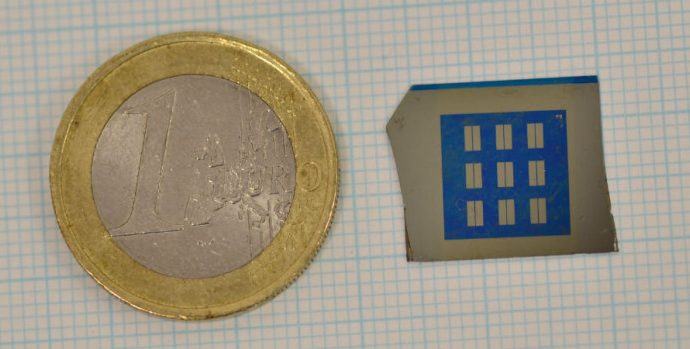A new graphene amplifying device unleashes energy hidden in low wavelengths, and will revolutionize medical technology.
Source: Interesting Engineering
Researchers created a new graphene device that will unleash new and elusive frequencies in the electromagnetic spectrum. According to a phys.org report, the device will give scientists access to terahertz wavelengths, which makes revolutionary technologies possible.
Graphene and the physics of terahertz waves
More familiar to most are microwaves and infrared—both wavelengths of light that fall below the visual spectrum. Likewise below our basic sense perception, terahertz waves (THz) exist between them, and are low-enegy, which makes it difficult for scientists to harness their energy and repurpose it for technology. This problem is called the “terahertz gap.”
In the past, closing the terahertz gap was impossible because, with a range between 30mm and 30µm, THz-wave (T-ray) signals were too weak for practical use.
Applied physics improves quality of life
This new capability to detect and amplify T-rays will usher a new age of medical, communications, satellite, and even cosmological tech.
For example, X-rays—used for a broad scope of medical procedures—are harmful in large doses, but are at present necessary for a vast catalogue of medical services. T-rays will offer a safe, non-destructive alternative, transforming medical practice.
Technically a new kind of optical transistor, the team of physicists behind the THz amplifier used graphene and a high-temperature superconductor to create the new device.
The properties of graphene—transparent, insensitive to light, and with zero-mass electrons—is composed of two layers of graphene. Conjoined to a superconductor, the massless electrons are trapped between these layers, like a (very) light sandwich.
Power “ex nihilo” from graphene amplifier
As a whole, the device is hooked up to a power source, and when the radiation (energy) hits the graphene’s outer layer, trapped particles attach themselves to outgoing waves, and amplify them.
“As the THz light falls on the sandwich it is reflected, like a mirror,” said Professor Fedor Kusmartsev of Loughborough University’s Department of Physics, in the phys.org report.
“The main point is that there will be more light reflected than fell on the device,” he added. “It works because external energy is supplied by a battery or by light that hits the surface from other, higher frequencies in the electromagnetic spectrum. The THz photons are transformed by the graphene into massless electrons, which, in turn, are transformed back into reflected, energised, THz photons. Due to such a transformation, the THz photons take energy from the graphene—or from the battery—and the weak THz signals are amplified.”
Terahertz power coming to a scientist near you
First published in Physical Review Letters, this breakthrough has the team of physicist authors working to complete the prototype of the device, to be tested soon. Prof Kusmartsev hopes to commercialize the amplifier within a year.
When it hits the proverbial shelves, Prof Kusmartsev expects the device will radically transform technology, especially in the study and mapping of the human brain.
Source: Interesting Engineering

































Leave a Comment
You must be logged in to post a comment.